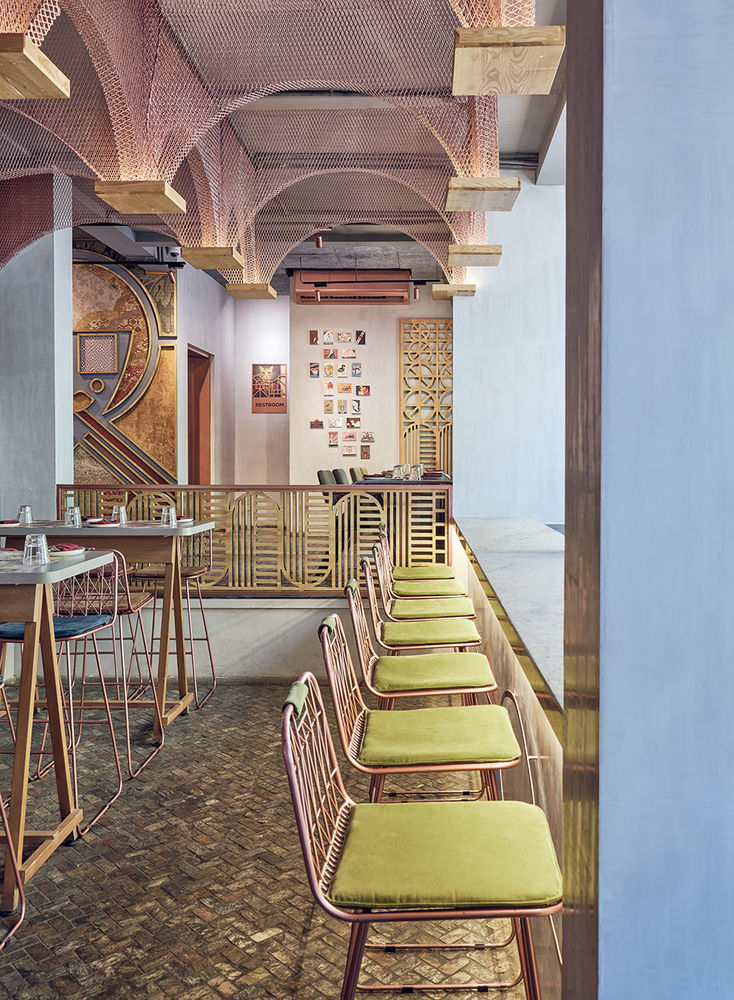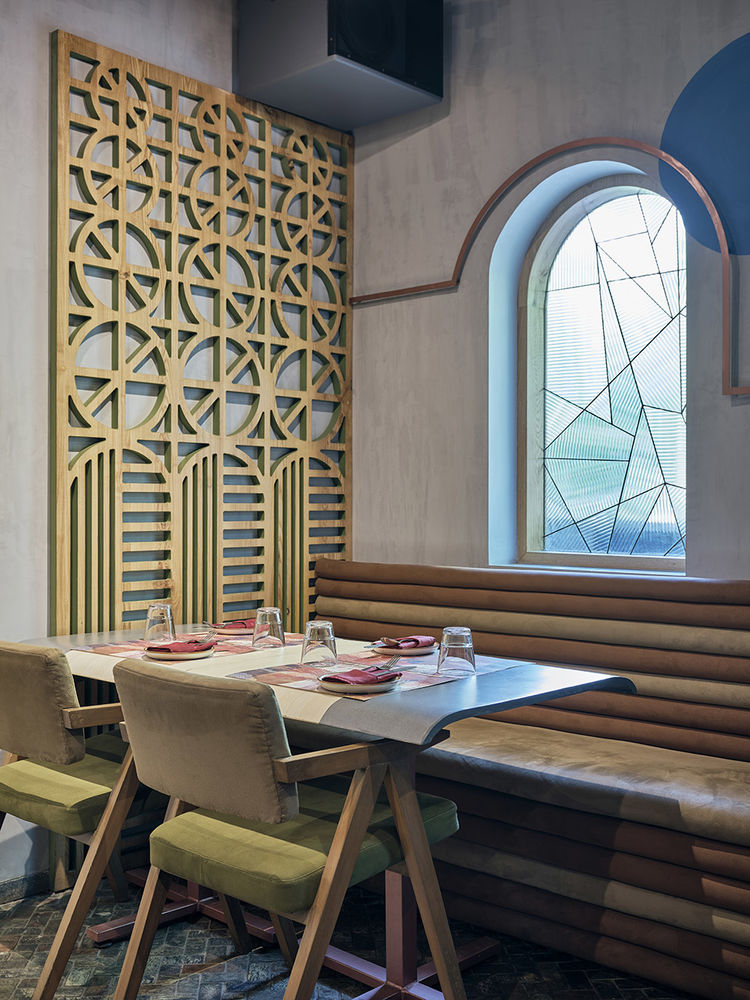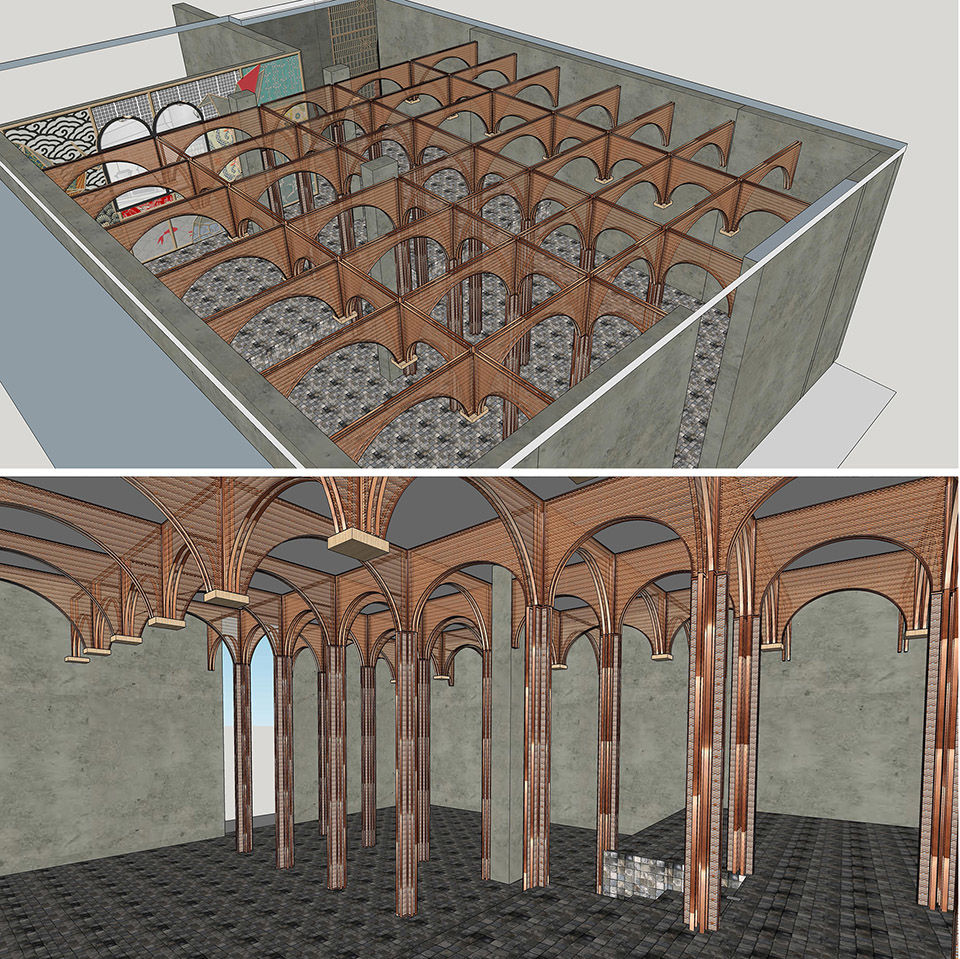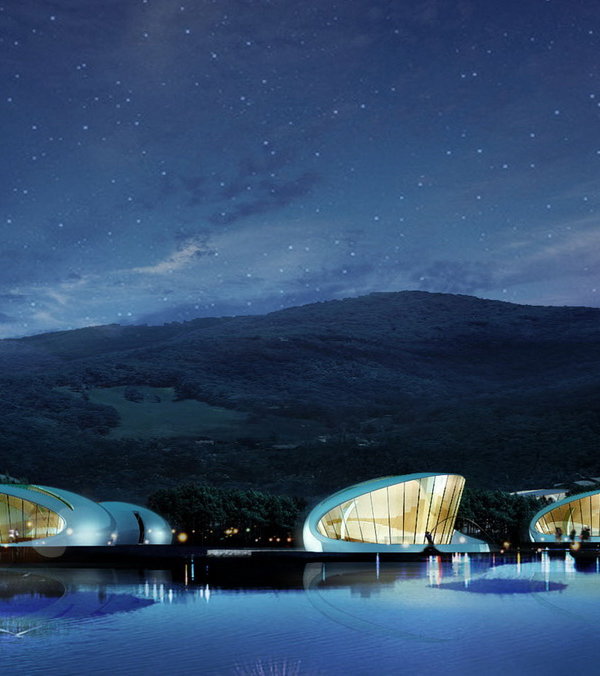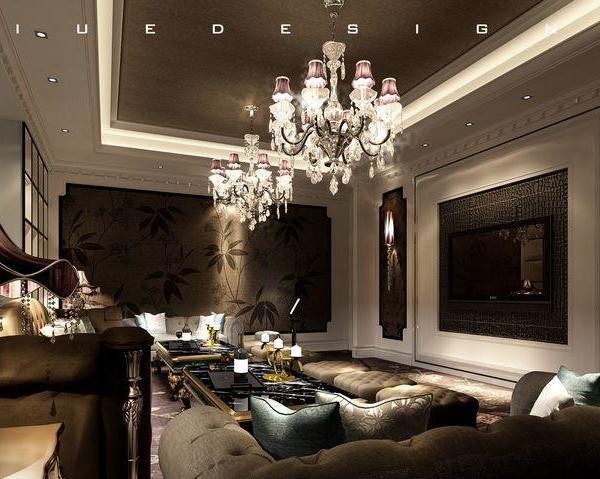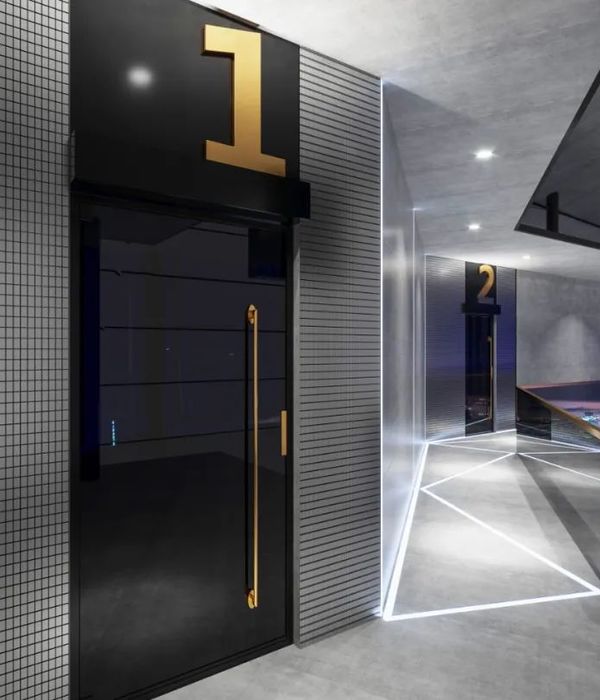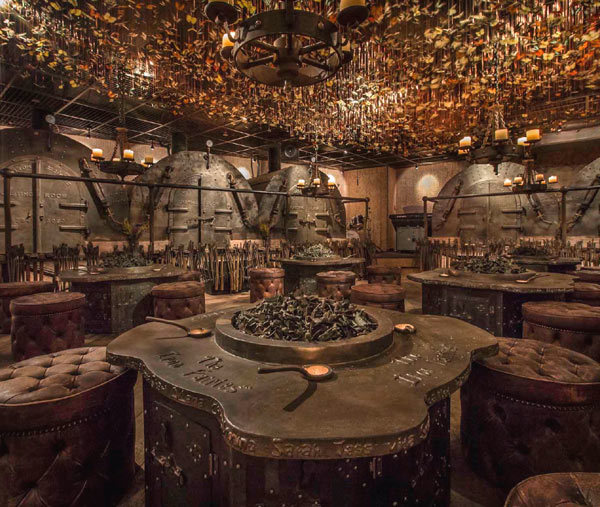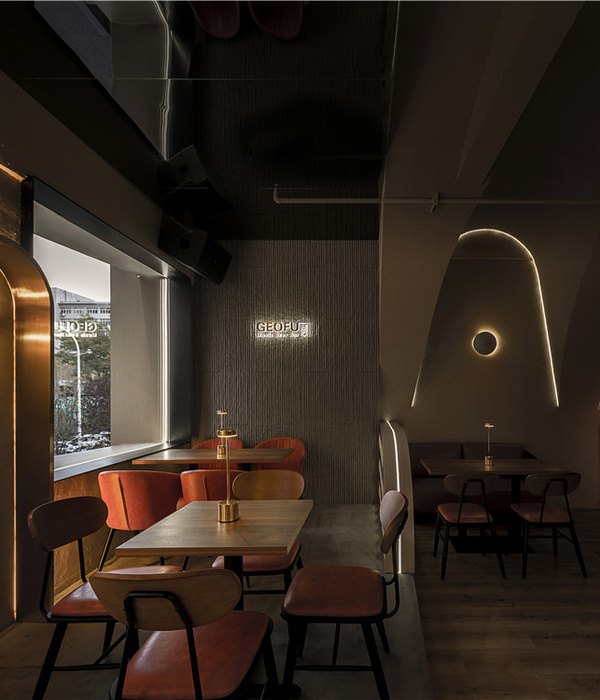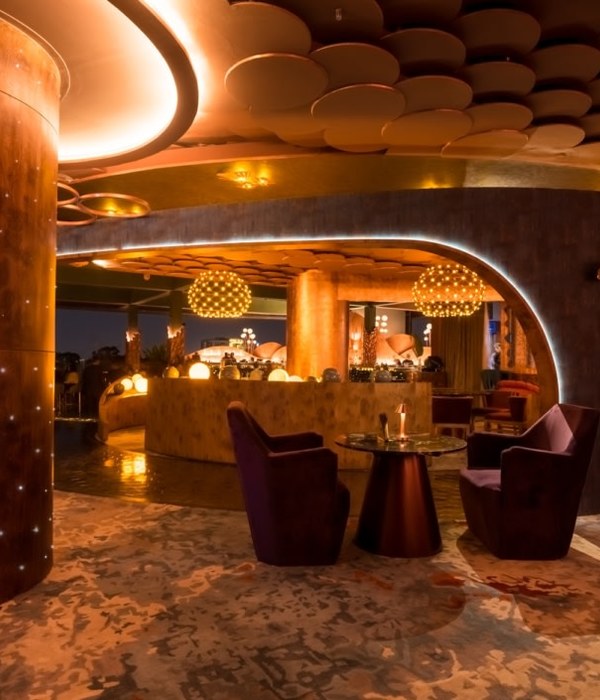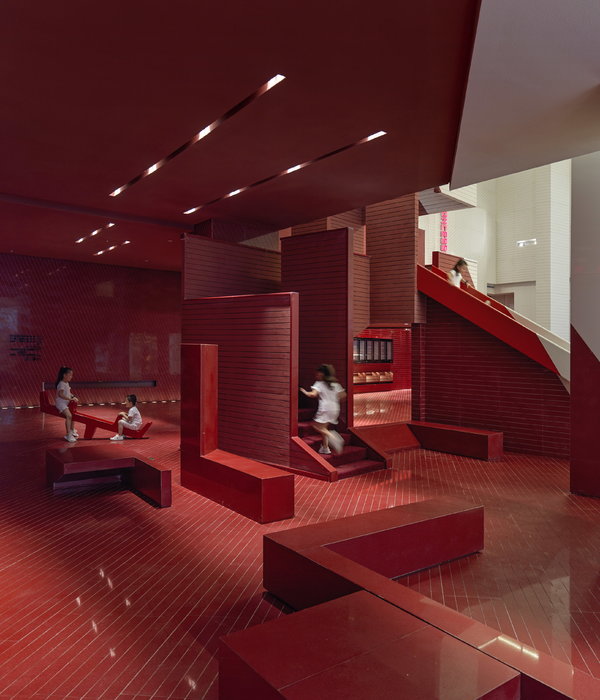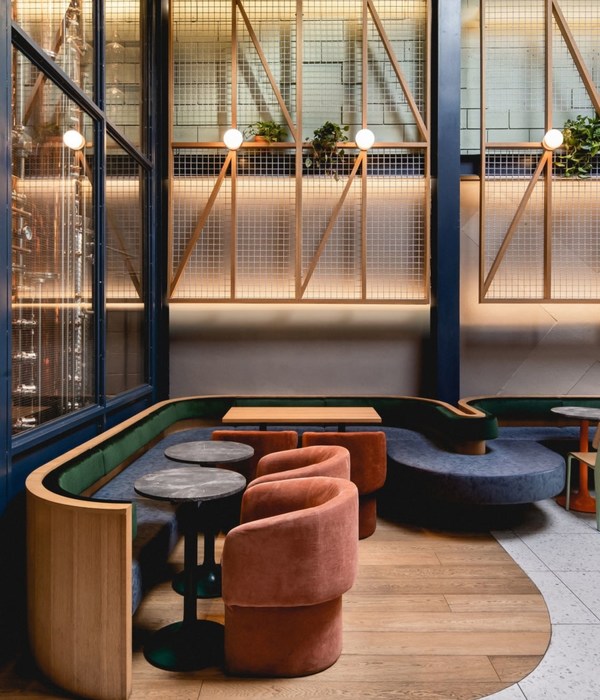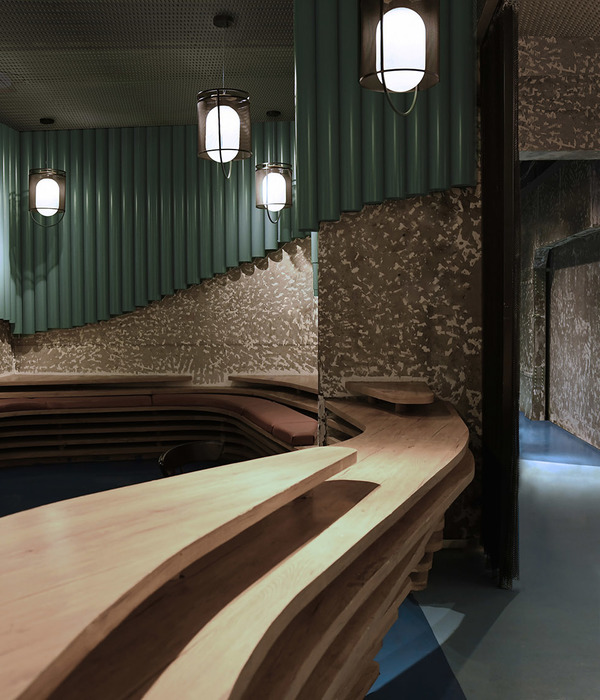MISU餐厅,印度 / FADD Studio
你能想象一个坐落在教堂中的亚洲餐厅吗?试想你正行走在空间中,金属柱子和拱门在身边和头顶上不断交替出现,阳光透过两侧的彩色花窗洒进来,手绘的壁画随处可见。很奇特的经历,对吗?现在,只要你迈进这家名为Misu的餐厅,所有的想象都会变成现实。
Imagine an Asian restaurant inside a construction site at any chapel. Imagine walking down the central isle looking at an alter in the making as you appreciate the support of the metal columns and arches alongside and above you. Imagine the stain glass on the sides streaming in the sunlight and imagine hand-painted murals on walls. Walk into Misu. Stop imagining.
▼从餐厅入口看整个空间,viewing from the entrance of the restaurant ©Gokul Rao Kadam
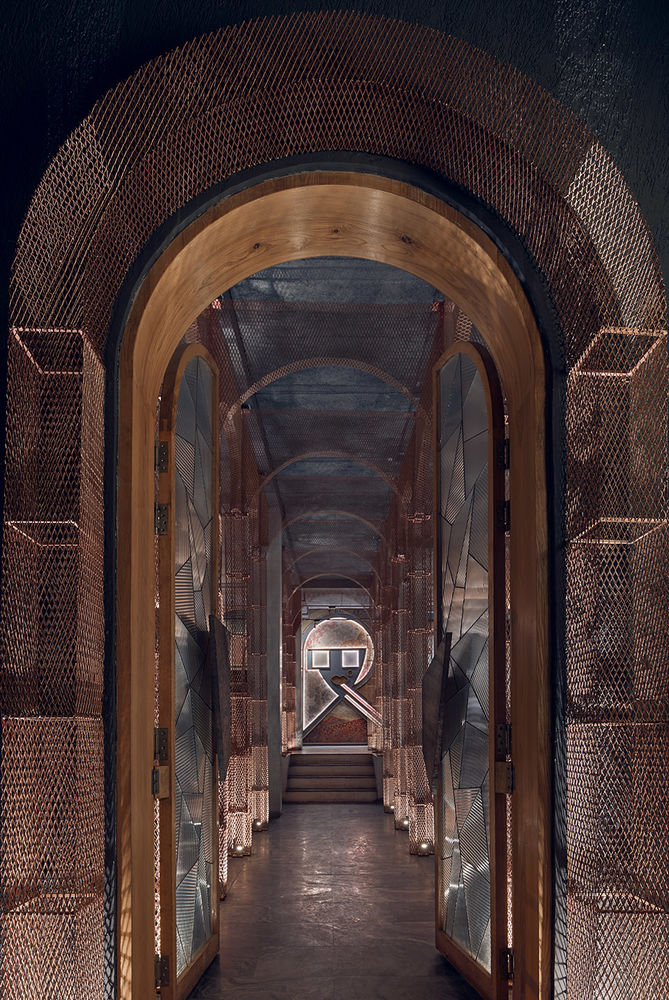
Misu餐厅位于一座教堂内,设计风格现代且前卫,不仅融合了古典和殖民时期的西方元素,更加入了精致的极简式日式造型,营造出一种既迷人又慵懒的空间氛围。餐厅采用间接照明,柔和的光线照亮了由金属线网构成的拱门和手绘墙,在夜间渲染出一种亲密的气氛。
And see the contemporary and edgy interpretation of a restaurant inside a church with classical and colonial western elements meeting fine and minimal Japanese shapes in a beautiful and mesmerising confluence of glamour and grunge. Indirect lighting softly illuminates the mesh arches and hand painted walls to create an intimate atmosphere at night.
▼餐厅的中央走廊,柔和的间接照明照亮了由金属线网构成的拱门,the central passage of the restaurant, indirect lighting softly illuminates the mesh arches ©Gokul Rao Kadam
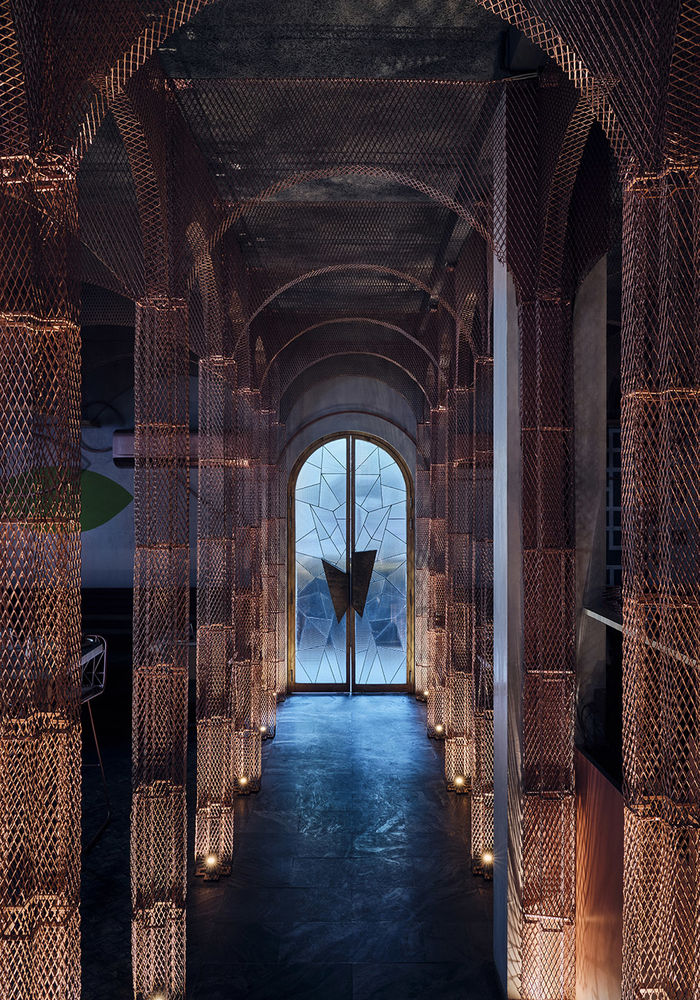
▼中央走廊两侧的金属线网拱门和餐厅入口的彩色玻璃门,the mesh arches at two sides of the central passage and the stain glass entrance door ©Gokul Rao Kadam
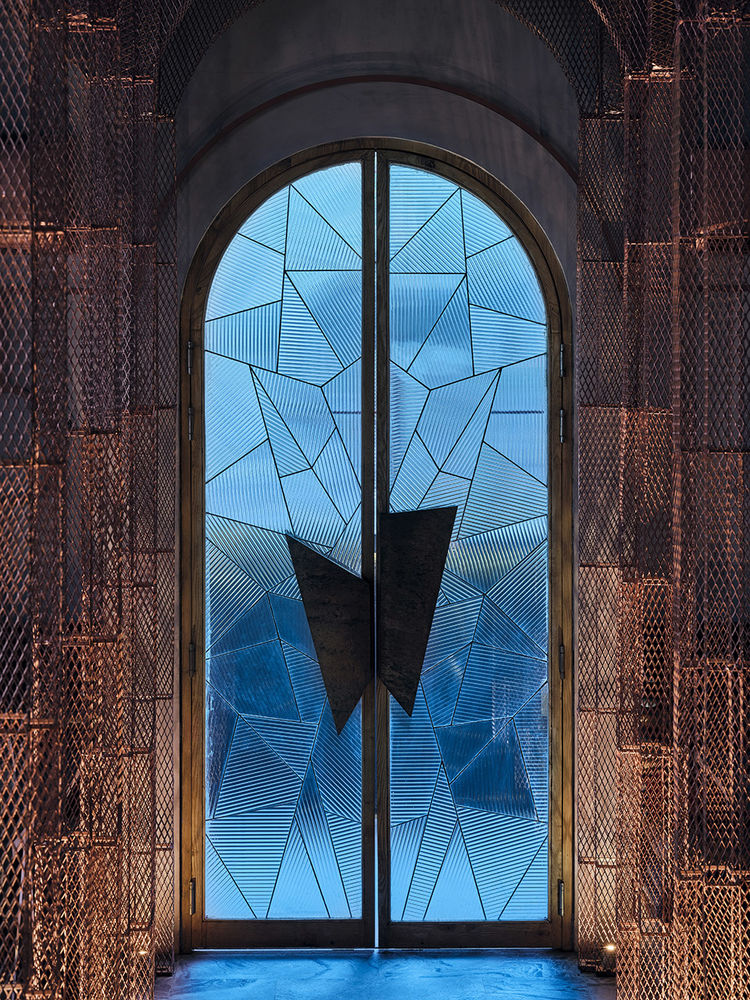
▼天花板下方由金属线网构成的拱,the mesh arches under the ceiling ©Gokul Rao Kadam
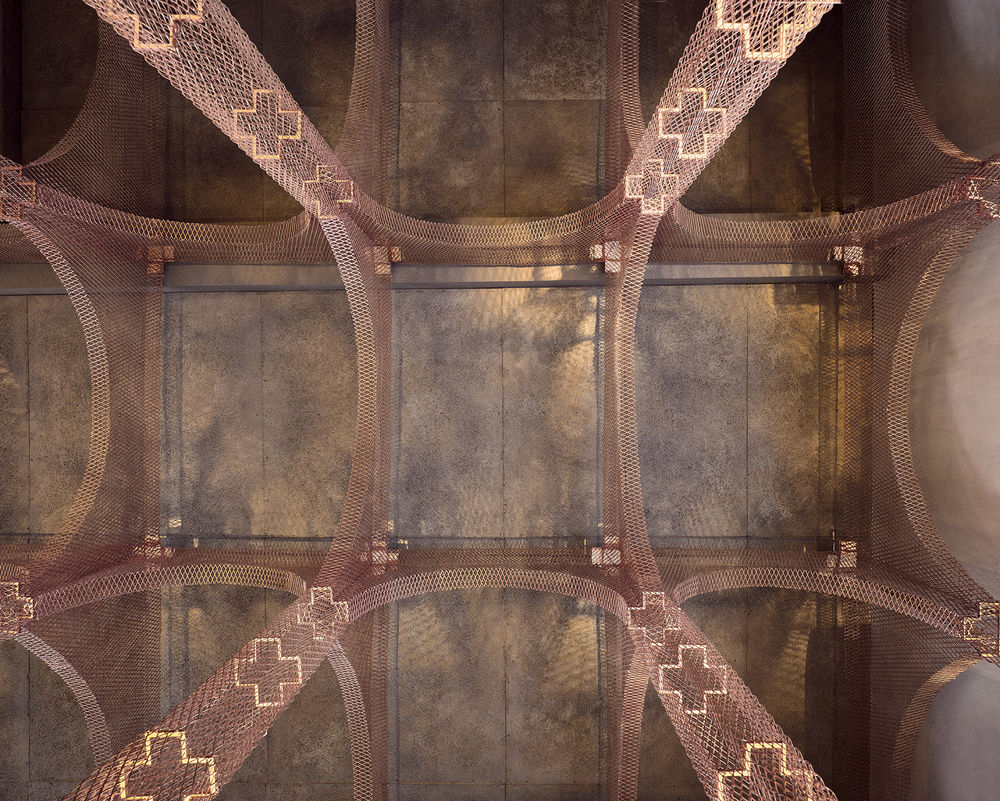
中央走廊的尽头是一个解构的立体式女孩肖像图。该画像区域位于餐厅中央走廊的尽端,与其他区域存在地面上的高差,也因此形成了较低的层高。中央走廊将用餐区域分隔成了两部分,使空间规划更加明晰。餐厅其余部分的墙体则保持空白,呈现出一种画布的感觉。白日里,吧台后方抽象的彩色玻璃在空间中占据了绝对的主导地位,成为了这个清新时尚的用餐空间的视觉焦点。
▼中央走廊将用餐空间分为两部分,其尽头是一个解构的立体式女孩肖像图,the central passage made of arches divides the dining space and leads up to the deconstructed and almost cubist portrait of a girls face ©Gokul Rao Kadam

▼女孩肖像区域细节,details of the girls face ©Gokul Rao Kadam

▼女孩肖像用餐区域,因为地面抬高的原因导致层高较低,the dining area with girls face, this area has a lower ceiling because of a fairly large step up ©Gokul Rao Kadam
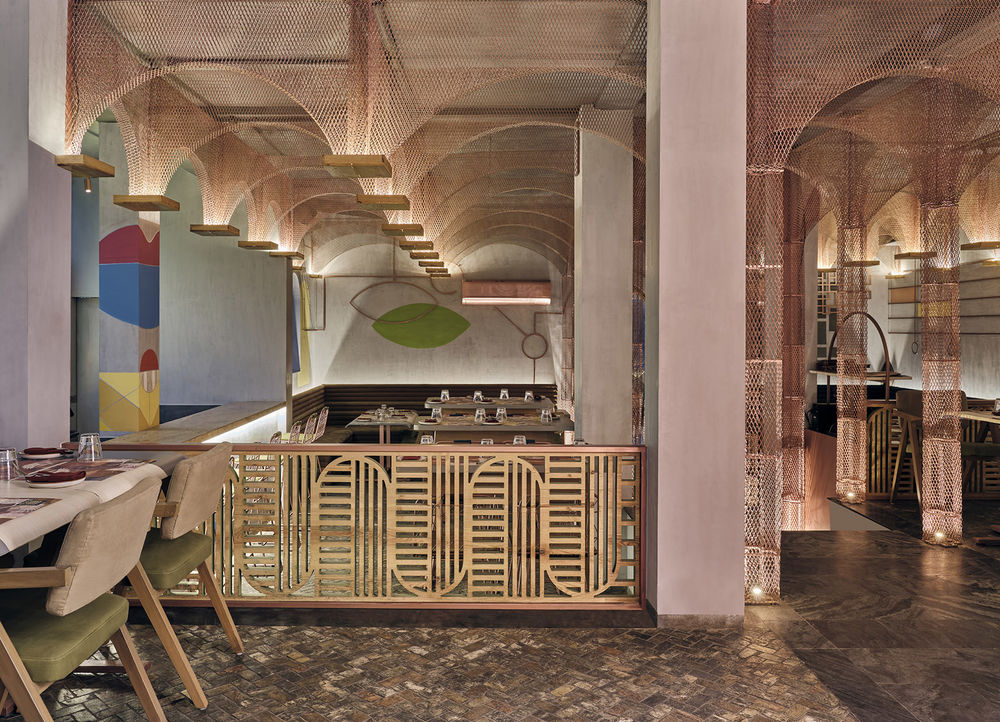
The deconstructed, almost cubist portrait of a girls face acts as the central point which the arches lead up to. The rest of it was as blank as a canvas could be. The space planning helped in realizing that this space, like the first would be divided by a central passage.There would be a fairly large step up and this area would have a lower ceiling. During the day the abstract stain glass at the back of the bar overpowers the area becoming the focal point for a fresh and hip ambience.
▼中心走廊一侧的用餐空间和吧台,the dining area on the one side of the central passage and the bar counter ©Gokul Rao Kadam
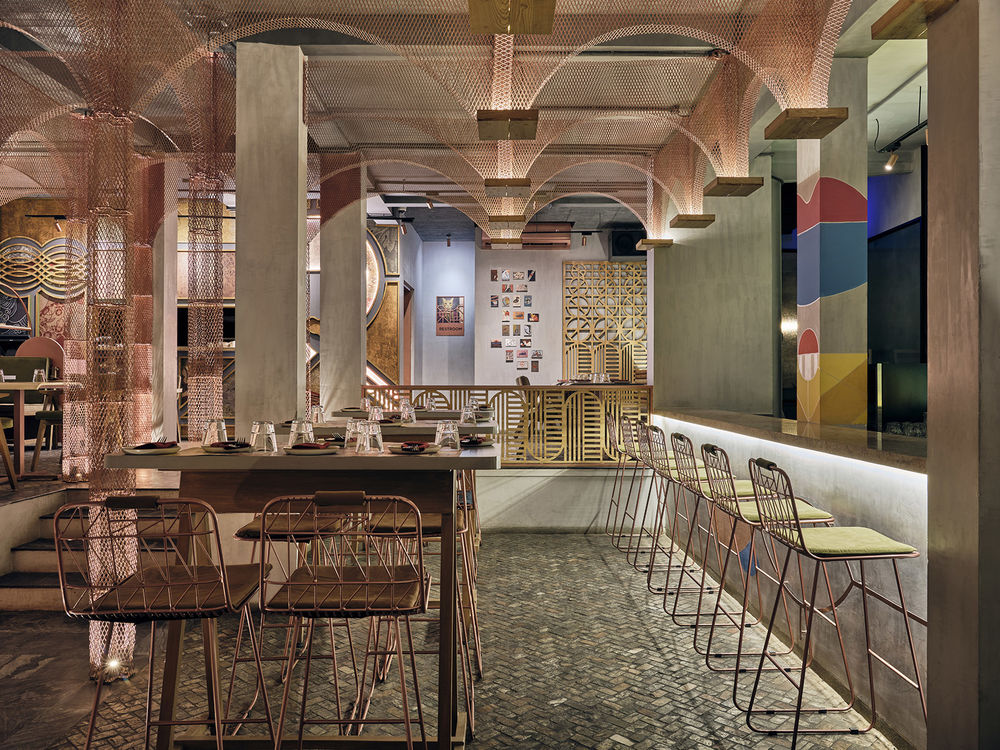
▼吧台后方抽象的彩色玻璃在空间中占据了绝对的主导地位,the abstract stain glass at the back of the bar overpowers the area ©Gokul Rao Kadam
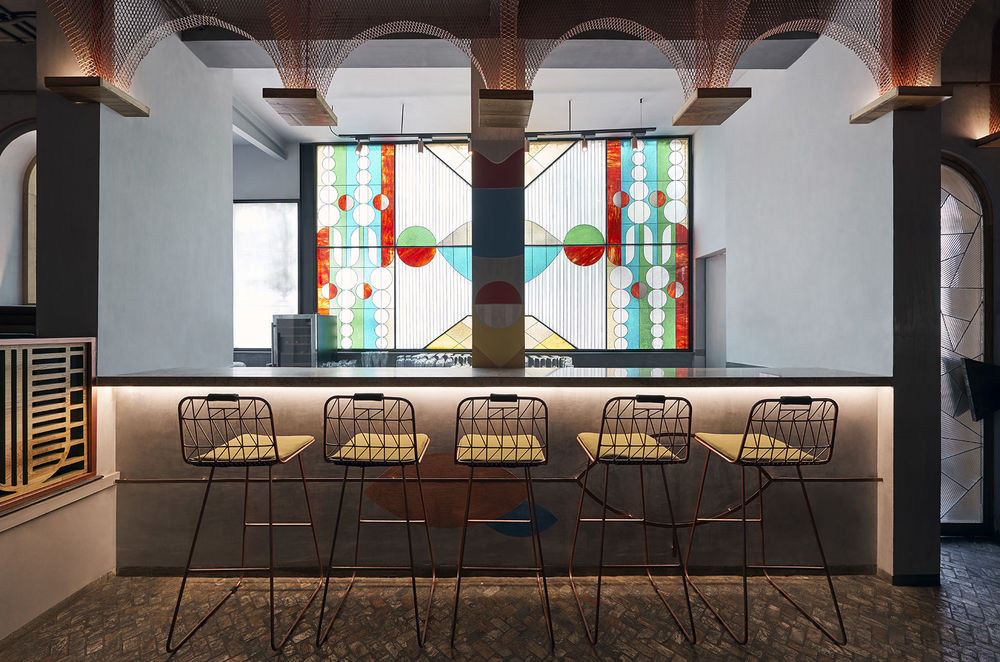
整个餐厅给人一种未完成的、正在施工的错觉,由此可以激发顾客们的好奇心,让他们能够在不久之后再次莅临。可以说,该餐厅不仅将设计概念和材料完美地融合在了一起,还实现了第一家Misu餐厅的奇妙演变。本项目所在的教堂是一座带有拱门的老旧建筑。在看到这座建筑的那一刹那,设计团队便决定在室内空间中也加入一些拱形的结构元素。这是建筑事务所FADD Studio所设计的第二家Misu餐厅。因此为了在一定程度上延续第一家Misu餐厅的特点,建筑师在本项目中使用了深蓝、绿、深黄和深红等颜色,并采取与第一家Misu餐厅相同的方式在空间中加入铜元素。此外,客户还提出希望本案能够像第一家餐厅一样,在空间中设置一个人物的肖像图,因此便出现了上文中所提到的解构主义女孩画像。
Because of its intentional unfinished and work-in-progress sensibility, patrons feel the need to come back to see the progress. Misu 2.0 is a fusion of concept and materials, a wonderful evolution from its predecessor. When we saw the site, an old building with arches, we knew at once we wanted to take some of the structural remnants inside as well. Since this was the second Misu we were designing, we also wanted it to have a bit of familiarity from the first one for brand recall. So we laid out some ground rules – we would bring back all our deep colours of blue, green and mustard and crimson, and use copper in some way as the first Misu too had in in abundance. And of course, the client maintained that he would like a face of sorts to be present as that worked in the first restaurant.
▼用餐空间局部,使用了深蓝、绿、深黄和深红等颜色,partial view of the dining area with deep colours of blue, green and mustard and crimson ©Gokul Rao Kadam
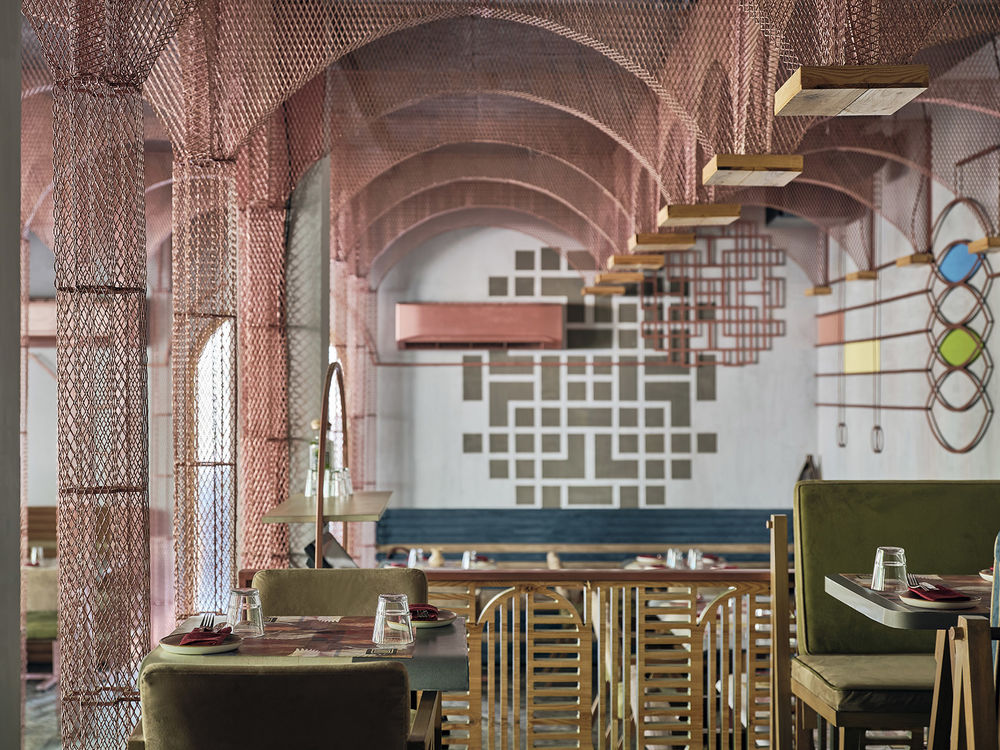
▼用餐空间局部,在空间中加入铜元素,partial view of the dining area with copper elements ©Gokul Rao Kadam
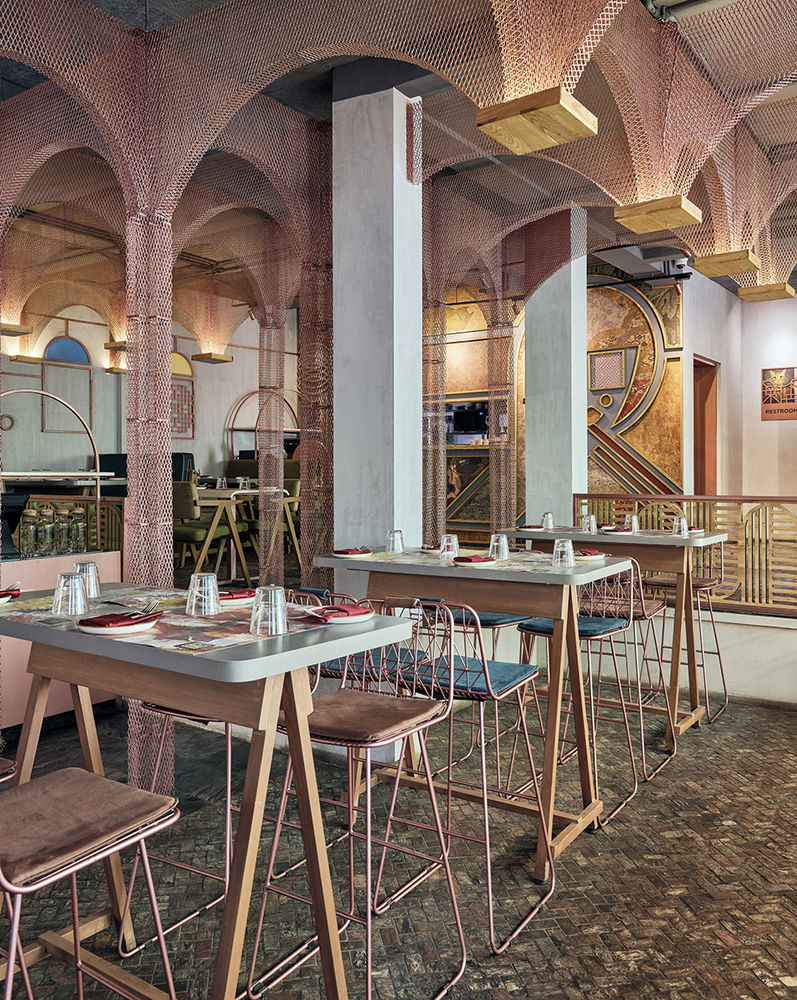
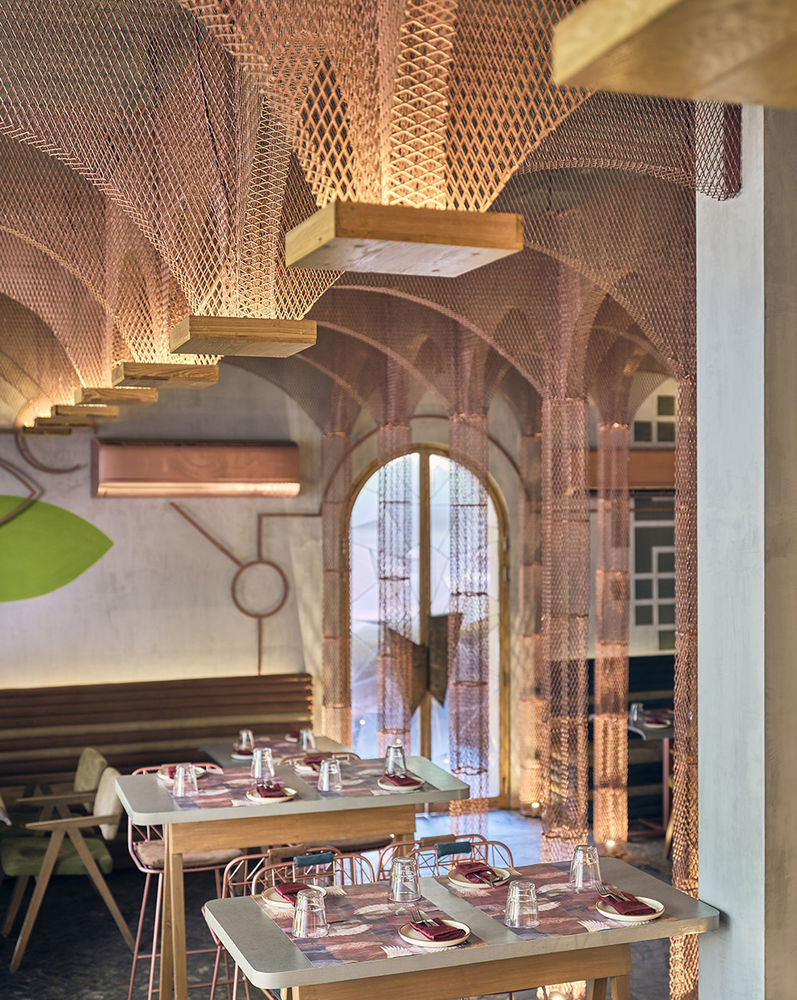
传统的亚洲餐厅中一般都设有一个亚洲面孔的肖像。本项目也延续了这种传统,但其在延续的过程中采用了打破常规的设计手法,通过抽象的线条和形状勾勒出一个与众不同的画像。另外,餐厅本身的空间也与传统相去甚远:它没有选择亚洲餐厅惯用的竹子、绿植、藤条或其他天然材料,也没有采用常规的亚洲符号和空间形式。为了提高其在城市环境中的可见性,设计团队在其中加入了罗马教堂的建筑元素,如彩色玻璃、壁画和中央走廊等,从而创造出了一个打破陈规的亚洲餐厅空间。
It stays to a trend that Asian restaurant often have an Asian face that is larger than life. But also it breaks away by the way the face is done. It is abstract using lines and shapes. The setting itself breaks away from the trend that Asian restaurant have to look typically “Asian” with elements like bamboo, greenery, cane, and natural materials, Asian symbolism and typography. When you see an Asian restaurant, usually you can spot it from a mile away. With this, we used Roman church elements like stain glass, wall painting and a central isle to create a counterintuitive feel for an Asian restaurant.
▼用餐空间局部,一个打破陈规的亚洲餐厅空间,partial view of the dining area that creates a counterintuitive feel for an Asian restaurant ©Gokul Rao Kadam
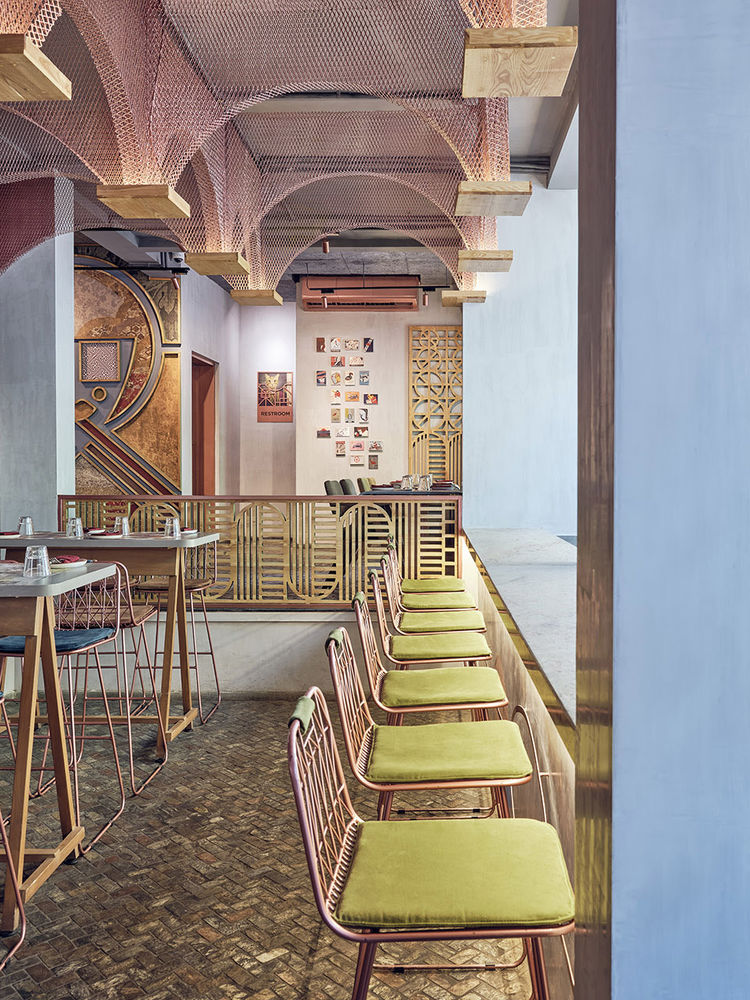
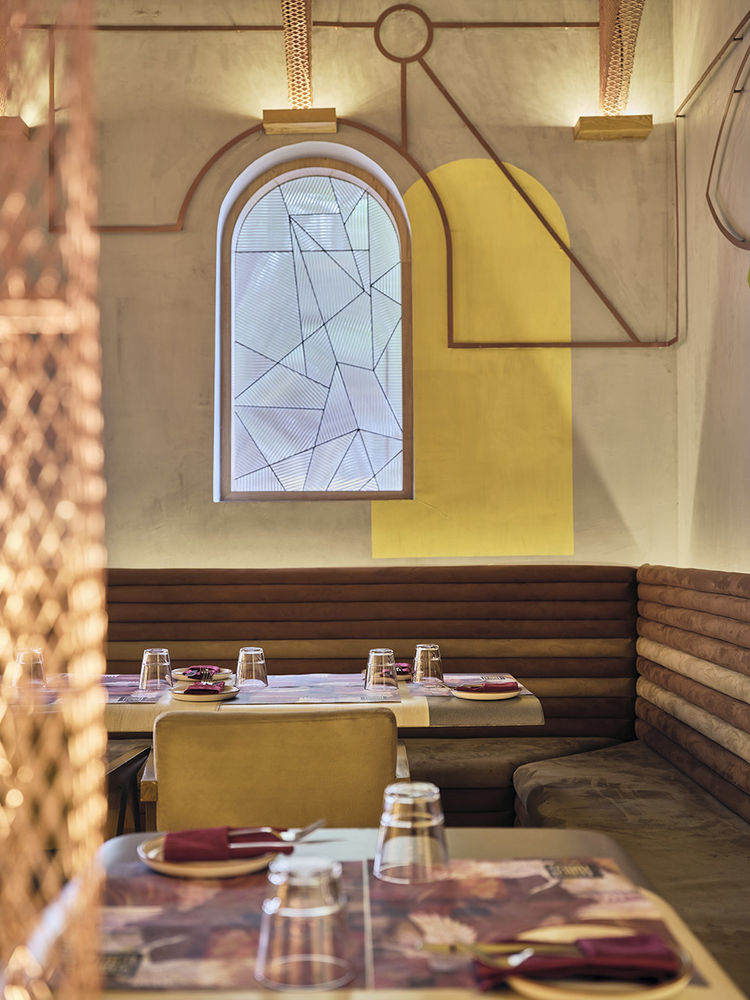
▼用餐空间局部,设置彩色玻璃和壁画,partial view of the dining area with stain glass and wall paintings ©Gokul Rao Kadam
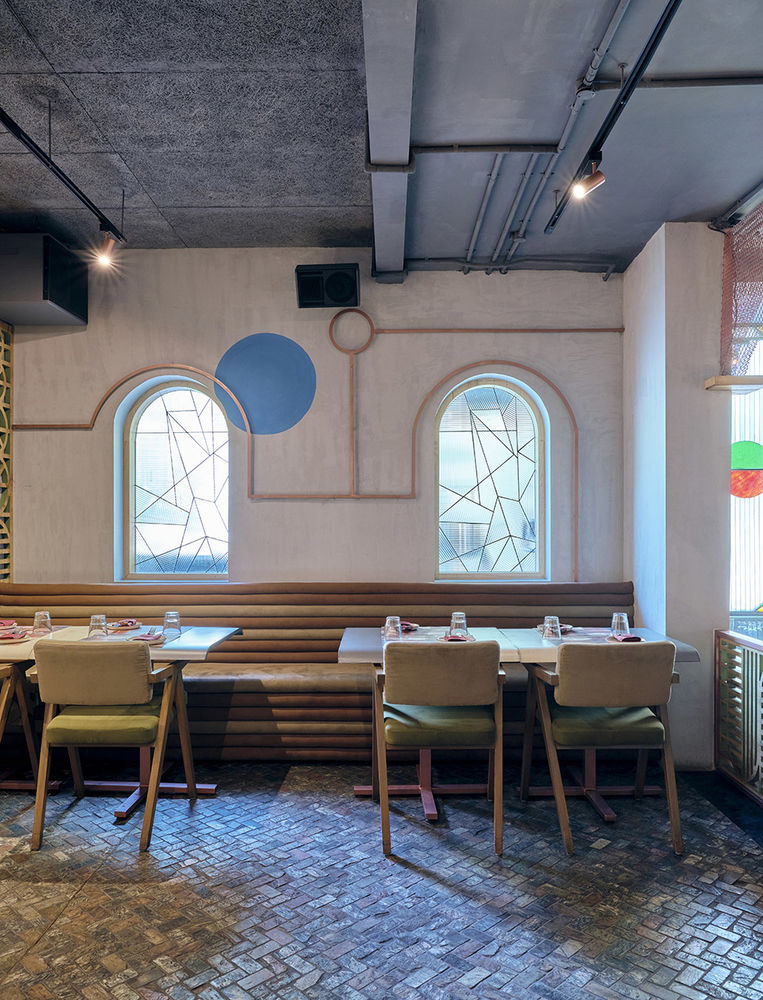
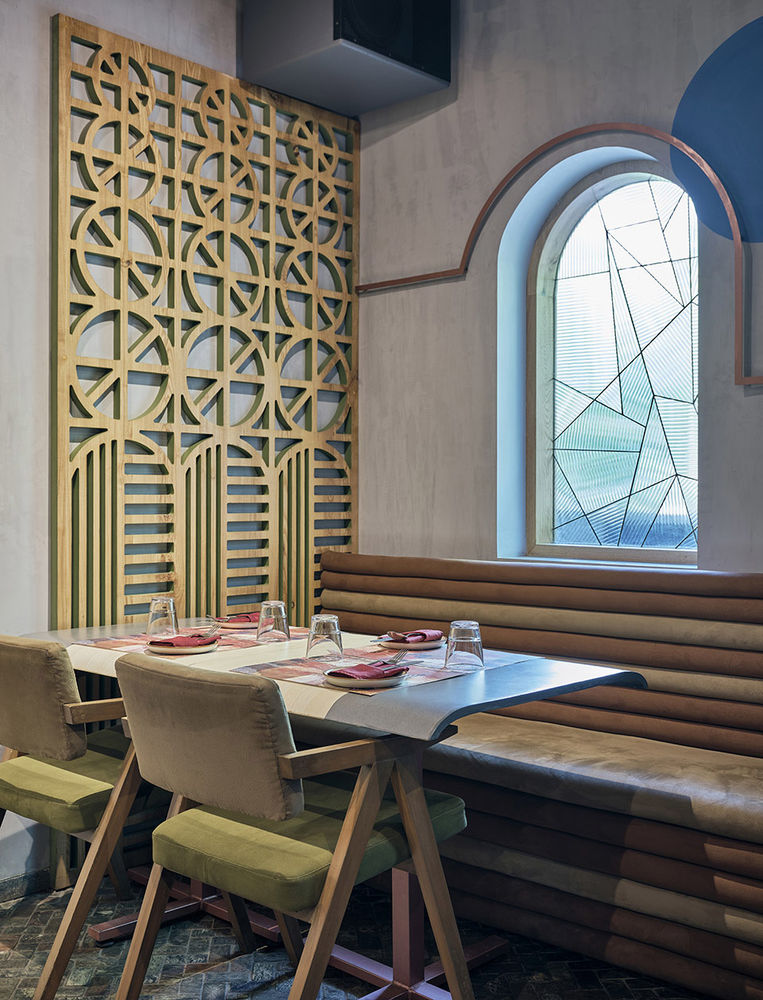
▼平面布置图,layout plan ©FADD Studio

▼室内立面图,sectional elevations ©FADD Studio
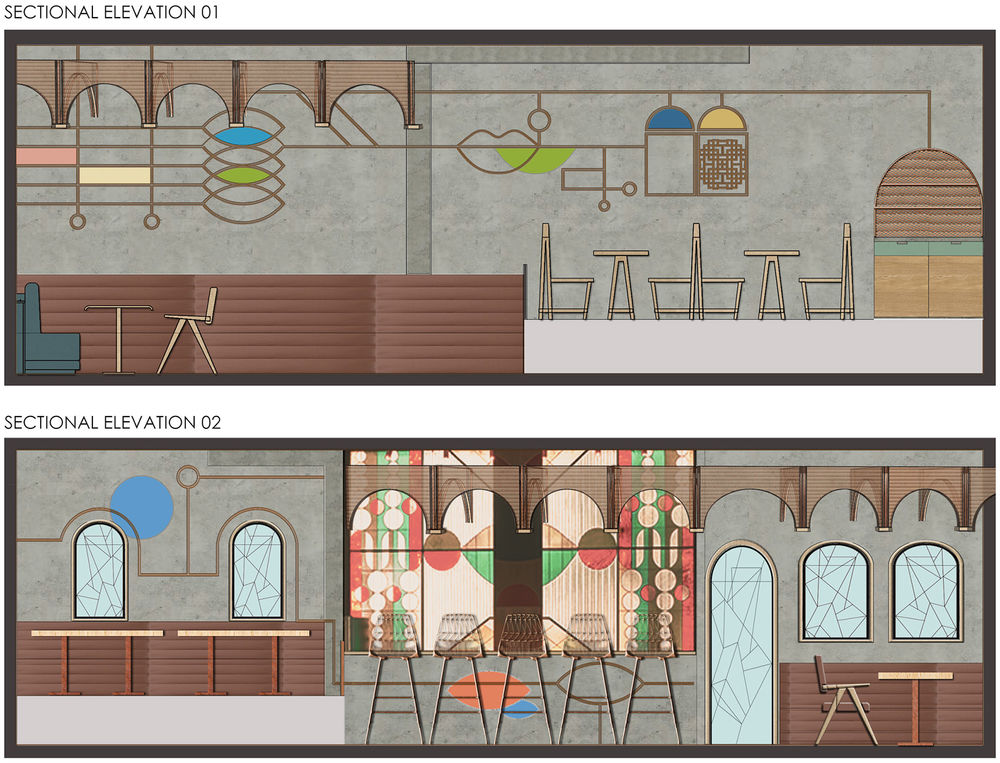
Project Name: MISU Architecture Firm: FADD Studio Completion Year: Dec 2018 Gross Built Area: 145 sq.m Project location: Bangalore, India Lead Architects: Dhaval Shellugar and Farah Ahmed Photo credits: Gokul Rao Kadam Design Team: Shruthy Bothra, Rishika, Dhaval Shellugar and Farah Ahmed Clients: AA Hospitality Metal Fabrication: A.S. Engineering Works Interior Contractor: Candor (Turn kney Solutions)

